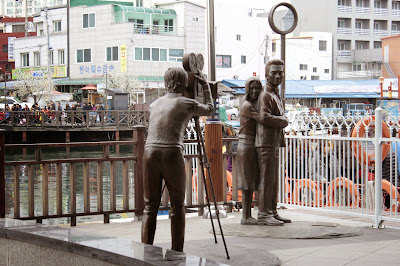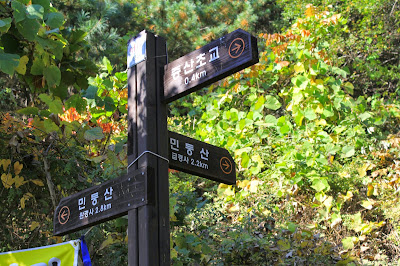Whenever I visited, I always had a feeling something new. The place was Naksansa temple(낙산사),
Hongreonam hermitage(홍련암),
Uisangdae(의상대) in Yangyang(양양), Gangwondo, South Korea
 |
| The Hongreonam hermitage(홍련암) |
It seemed like that winds took a rest in here, clouds softly floated around and waves sang a song having in many ways of feeling. What all I had done in their was to become one with the nature. As usual as just like nature itself. In spring, summer, fall and in
winter, it always shows indescribable beauty and the comforts. Absolutely this is one of the bucket lists must to go to the Korean. When I grew up, I visited here so many times for the educational experiences in elementary school, the summer vacation and for the rest times together with family. Maybe many Koreans had same experience as me
.This is
located on the slopes of Naksan mountain (낙산) midway
between Sokcho-city(속초 )and Yangyang-gun(양양) and mid-spot between Seorak beach and
Naksan beach also in the East coast of South Korea. Naksan means the
place where the Buddhist Goddess of Mercy(Gwanseum bosal;관세음보살) stay. The goddess of mercy is so familiar with the human that she help them comfortable and happy according to the record of Buddhism.

Naksansa temple(낙산사) was built in AD 671 by great master Uisang-daesa who was a priest of high
virtue and studied in China of ancient Dang kingdom and also famous master in the
China at that time. After return from China and arrived at here,
he got treasures of Buddhist prayer beads made of crystal and magic dazzling
pearl. And he received a divine revelation about the site of temple after the
praying of 27 days. Through the long time this temple had been several
procedures of reconstruction and expanding due to severe damage by fire, foreign invasions and the Korean war(1950-1953). Regretfully, the biggest damage
of this temple recently that almost parts of one and treasures being destroyed was done
by the fire in the spring of 2005. This one was restored through historical
research and reopened to the public in 2007 by the efforts and donations of all
across the nations’ Buddhists. Fortunately, Hongreonam hermitage, Uisangdae
pavilion and Haesugwaneumsang statue did avoid the misfortune of the big fire
in 2005.
 |
| The Uisangdae Pavilion(의상대) |
 |
| down side of roof-tile written donators' names and wishes |
 |
| The Uisangdae pavilion(의상대) |
Uisangdae pavilion(의상대) is
the place that Zen master UIsang-daesa(의상대사) sat and meditated. Monk Manhae reconstructed this pavilion to honor the Zen master Uisang as the shape of present in 1925(about 90 years
ago) on top of the cliff by the sea. This has renowned for blending harmony with
surrounding sea pines, the steep coastal cliff and the East Sea. This is the particularly famous for superb impressive attractions with the scenery of sun-rising. So many
poets and writers wrote poems and left their records of beautiful sightseeing for a long time.
 |
| The Hongreonam hermitage(홍련암) |
Hongreonam
hermitage (홍련암), red
lotus hermitage in the literary meaning, was named after that Zen master Uisang-daesa(의상대사) saw
the Buddhist Goddess of Mercy standing on the red lotus, was built above on the stone cave in AD 676(almost 1300 years ago). There is a 10-centimeters hall in the
floor that people can see the waves by peeping through the hall, It is located on a
cliff at the edge of east coast.
 |
| The Bodhisattva of Mercy |
15 meters(49 feet) of the height, 700 tons of white granite
statue, over-looking the southeast sea, built in 1977, the biggest Buddhist
statue among the same sorts at that time, although the short history this
Haesugwanemsang(해수관음상; Bodhisattva
of Mercy) was adding the meaning to the people with her warm great image. The pond
in front of this statue had many coins wishing fortunes. So many wishes as many as coins. This area was left nothing on the right side of this mountain filled with just black burned land by fire since few years ago. To see the new-born greens was very delightful thing after big tragic fire. Now it was keep going to recover their natural life fortunately. I felt the greatness of time and nature. No fire again, please.
Naksansa temple operates
various program of temple stay that gives people the temple life, Buddhist culture,
experience a temple food, Korean traditional tea culture and attempt to look
over ones' mind. There website is consisted on Korean language only as follow. >>click here !! It is better to sending your questions or application to their e-mail address stated on their official home page.
 |
| captured by temple stay of Naksansa temple(낙산사) official home page |































.JPG)
.JPG)
.JPG)

.JPG)
.JPG)
.JPG)


.JPG)



















